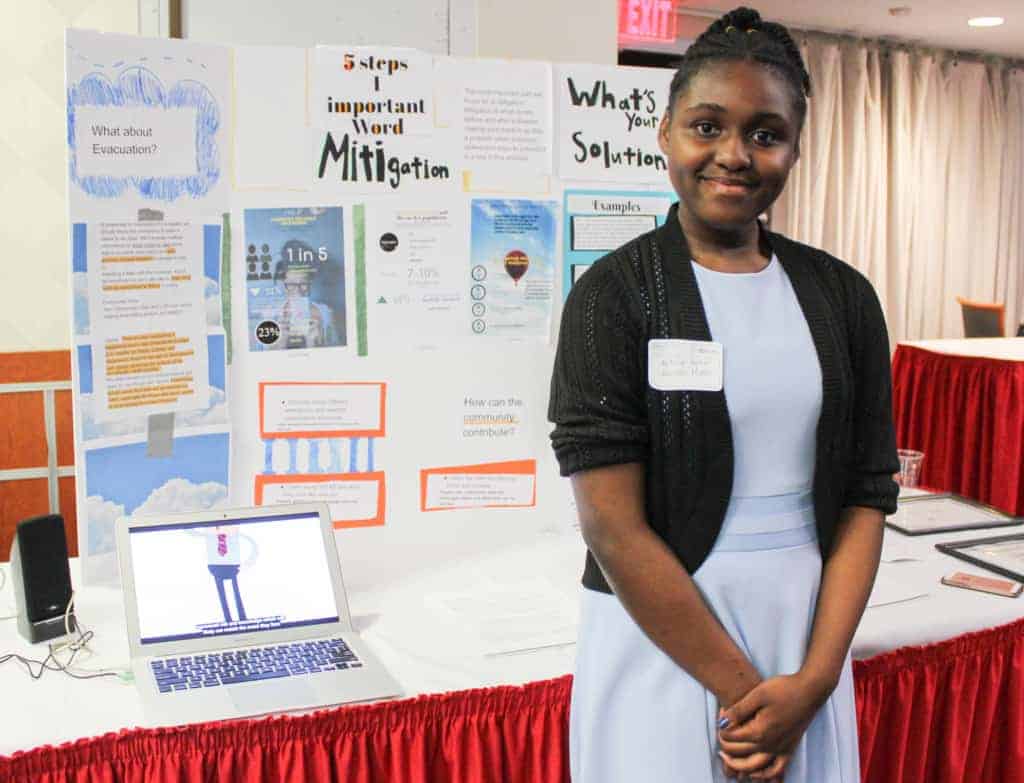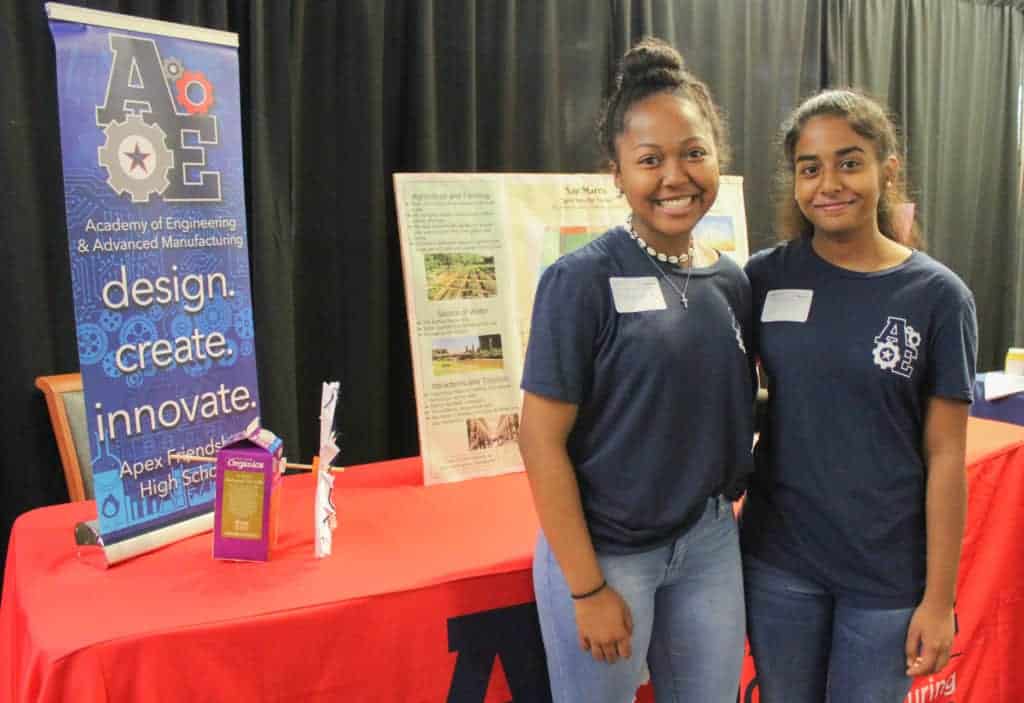

Last Tuesday, more than 150 students and teachers from Wake County Public Schools showcased their research at Wake Ed Partnership’s STEMposium at PNC Arena. The event shared the culmination of work inspired by SummerSTEM — a program that brings 100 K-12 teachers to real-world STEM with trips to local STEM industries, including Duke Energy, Biogen, SAS, the N.C. Department of Transportation, and more.
“We went to SummerSTEM last summer, and we were immersed in Duke Energy,” said Gina DeBose, an eighth grade social studies teacher at Wakefield Middle. “We saw what they do and went to the nuclear power plant. We went to ABB as well.”
“We know that STEM is highly important for Wake County, and they’re pushing that into our classrooms across the board, across curriculum,” DeBose said of her participation as a social studies teacher.
Teachers take what they’ve learned in SummerSTEM back to their classrooms, resulting in student research projects on related industry topics. One of DeBose’s students, eighth grader Natelya Husser, was selected to present at STEMposium after being the top pick at the school’s own research fair.
Husser’s project focused on text messaging for better emergency management. The text messages, called Wireless Emergency Alerts, provide direct access to a device that people carry right in their pockets.
“When my teachers came up with it, their inspiration was mostly Hurricane Florence,” Husser said. “I learned about what goes into all of what emergency management does and the problems that they face. One important fact that I learned is that in the current budget climate, emergency management had to do with less, which really ties in with what we’re trying to do — not make an invention, but use an already non-expensive resource and turn it into something really big.”
Husser, who is thinking about a career in programming, explained that there’s also programming that goes into these types of alerts, including for geolocation.
“It’s real world,” said DeBose. “I love anything that’s real world and gets them thinking about the future or how they can have an impact on our society as a whole.”


Freshmen Melanie Konin and Catherine Walter of the Academy of Engineering and Manufacturing at Apex Friendship High School started with a real-world city, Houston, and then redesigned it into a utopia called San Martin through comprehensive city planning.
“It’s an upgraded city,” Walter explained.
“[Houston has] a lot of oil energy as of now, but it’s not sustainable because it’s a fossil fuel, so we wanted to use wind energy because it’s a coastal city and the wind breezes are high,” she said. “We also focused on green space to make our people happier, and because Texas has a lot of hurricanes, we made our cities and our houses on stilts, and we had a seal coating on the exterior so water wouldn’t get in. We also had a flooding insurance program.”
Sustainability was the primary focus of the city’s redesign.
“I think it’s really important to be really eco-friendly, to reuse, recycle, reduce the amount of plastic that we’re using, [and] encourage green space in your area,” Konin said.
Their English teacher, Kim Eckstein, said that Apex town council members were even invited to speak to students about how the different sectors in city planning interact and some of the compromises they have to make.
Eckstein was another example of teaching involvement from a field outside of STEM.
“My standards for English are speaking and listening, which you can see — there’s a lot of speaking and listening in this particular project,” Eckstein said. “They do some writing when they create their posters. They do some writing when they’re writing up their marketing materials.”
“We might have great ideas, but if we can’t communicate those ideas effectively, it doesn’t matter because communities depend on our ability to negotiate, to compromise, to explain things well,” she added.


Students applied their communication skills directly while presenting at STEMposium by speaking about complex research topics to attendees they had never previously met.
“I really enjoyed meeting new people,” Konin said of the STEMposium experience. “You meet many different professionals in many different areas.”
Walter said she enjoyed speaking to an attendee who worked at the Environmental Protection Agency (which has offices in Research Triangle Park) and that she hoped to one day be a biomedical or aerospace engineer. Konin has her sights set on becoming a surgeon.
“I think a lot of educators would agree, but girls in science and young women in science are so strong,” said Matthew Yaeger, the girls’ earth science teacher. “They are such strong performers, and I don’t know where the insecurities come from that everyone keeps saying, ‘why they drop out is because they don’t feel they’re right for it.'”
“The girls that are here today are rock stars, so I can’t encourage them enough,” he said.


